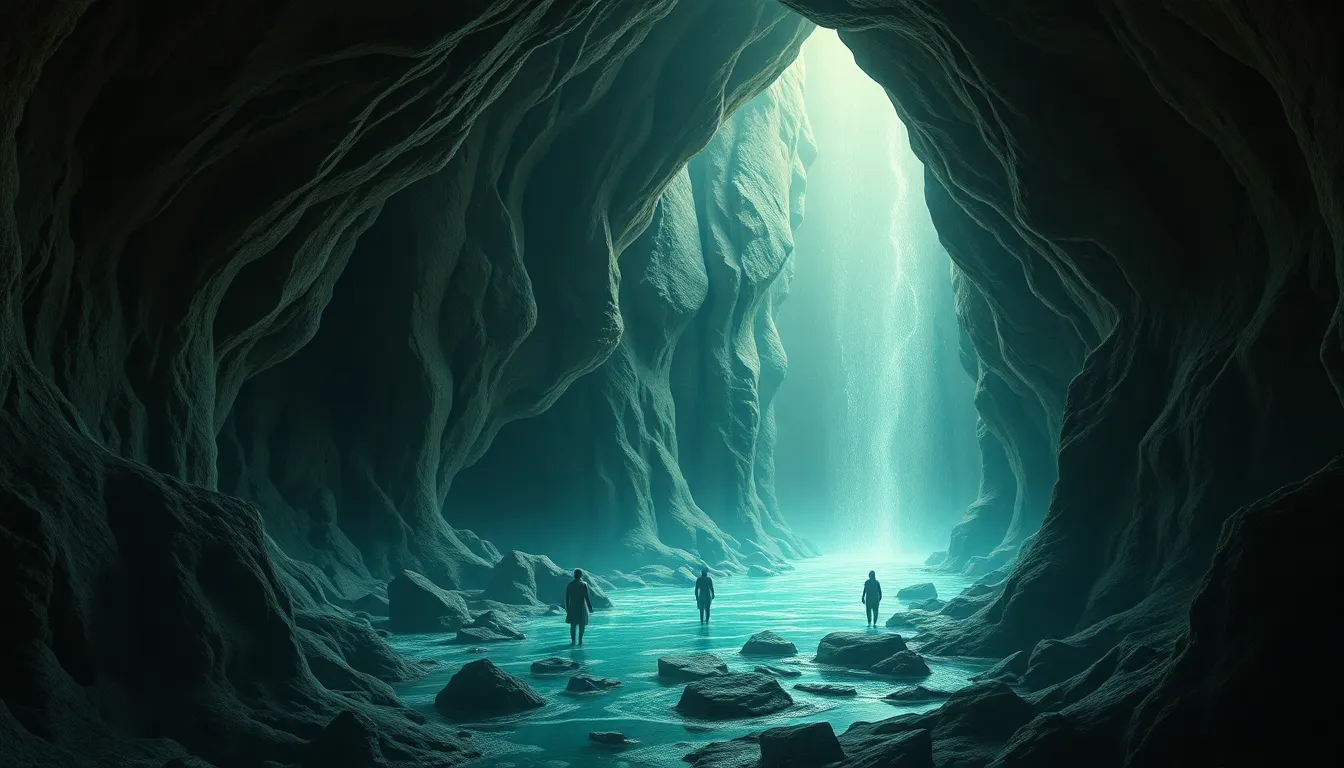The Underworld: Myths That Explore the Depths of the Soul
Introduction: Understanding the Concept of the Underworld
The concept of the Underworld has fascinated humanity for centuries, manifesting in various forms across cultures and epochs. Generally, the Underworld is viewed as a realm of the dead, a place where souls go after death. However, it often embodies much more than just death; it represents a journey, a struggle, and a profound exploration of the human condition.
In mythology, the Underworld serves as a backdrop for narratives that delve into themes of morality, love, loss, and redemption. These stories not only offer insights into ancient belief systems but also reflect the struggles and aspirations of the human soul.
The Underworld in Ancient Civilizations
Ancient civilizations, each with their unique beliefs and practices, have depicted the Underworld in diverse ways. Here is an overview of the Underworld in three significant cultures:
- Egyptian Mythology: The afterlife in ancient Egypt was a well-structured realm, governed by Osiris, the god of the dead. The journey to the afterlife involved judgment, where the heart of the deceased was weighed against the feather of Ma’at, symbolizing truth and justice.
- Greek Mythology: The Greeks believed in Hades, a shadowy realm ruled by the god of the same name. Hades was divided into different areas such as the Elysian Fields for the virtuous and Tartarus for the wicked, illustrating the moral dichotomy inherent in Greek beliefs.
- Mesopotamian Myths: In Mesopotamian culture, the Underworld, known as Kur, was a dreary place where the dead existed in a shadowy state. The goddess Ereshkigal ruled over this realm, highlighting the inevitability of death and the somber nature of existence after life.
The Psychological Interpretation of the Underworld
From a psychological perspective, the Underworld can be viewed as a metaphor for the subconscious mind. It represents our hidden fears, desires, and unresolved conflicts. Myths often illustrate journeys through the Underworld as a means of confronting these inner demons.
Many narratives delve into personal struggles, portraying characters who must navigate their fears to achieve growth. This journey often symbolizes the process of self-discovery, healing, and ultimately, transformation.
Prominent Myths Featuring the Underworld
Two of the most prominent myths involving the Underworld are the tale of Orpheus and Eurydice and the Epic of Gilgamesh. These stories resonate deeply with themes of love, loss, and redemption:
- Orpheus and Eurydice: This myth tells the story of Orpheus, a gifted musician, who ventures into the Underworld to retrieve his beloved Eurydice. His journey highlights the power of love and the pain of loss, culminating in a tragic twist that underscores the theme of acceptance.
- Epic of Gilgamesh: In this ancient tale, Gilgamesh seeks immortality after the death of his friend Enkidu. His descent into the Underworld serves as an exploration of mortality and the human condition, emphasizing the inevitability of death and the importance of living a meaningful life.
The Role of Judgment and Transformation in Underworld Myths
Judgment plays a crucial role in many Underworld myths. For example, Osiris judged the souls of the deceased, determining their fate based on their earthly actions. Similarly, Hades presided over the souls of the dead, categorizing them based on their moral conduct.
Transformation and rebirth are also central themes in these narratives. Characters often emerge from their Underworld journeys changed, having confronted their fears or gained wisdom. This reflects the broader human experience of facing challenges and emerging stronger.
Cultural Variations of the Underworld
The Underworld is depicted differently across cultures, each influenced by its unique beliefs and values. Here are brief comparisons:
- Norse Hel: In Norse mythology, Hel is a place for those who did not die a heroic death. It is neither a paradise nor a hell, reflecting the Norse value of bravery in battle.
- Hindu Naraka: Hindu beliefs depict Naraka as a realm of punishment for wrongdoings, but it is not permanent; souls can be reborn. This reflects the cyclical nature of life and the importance of karma.
- Aztec Mictlan: The Aztec Underworld, Mictlan, is a complex realm where souls journey for four years before reaching their final destination, emphasizing the value of the afterlife journey.
The Underworld as a Reflection of Societal Values
Myths about the Underworld often reveal the fears and morals of the societies that created them. They serve as cautionary tales, illustrating the consequences of one’s actions and the importance of living ethically.
These narratives also address mortality, teaching lessons about the transient nature of life and the significance of legacy. The stories encourage reflection on how one lives and the impact of those choices.
Modern Interpretations of Underworld Myths
The influence of Underworld myths continues to resonate in contemporary literature and art. Modern interpretations often explore psychological and philosophical dimensions, questioning the nature of existence and the human psyche.
Authors and filmmakers frequently draw on these ancient stories to create narratives that discuss themes of identity, trauma, and redemption, making these timeless tales relevant to today’s audiences.
The Underworld in Popular Culture
The portrayal of the Underworld in popular culture has evolved dramatically, finding expression in films, books, and video games. Notable examples include:
- Films: Movies like “Hercules” and “What Dreams May Come” depict the Underworld in visually stunning ways, exploring themes of love and loss.
- Books: Novels such as “The Divine Comedy” and “The Lovely Bones” use the Underworld as a narrative device to explore complex emotional landscapes.
- Video Games: Games like “God of War” and “Hades” immerse players in Underworld settings, allowing them to confront their fears and make choices that affect their journeys.
Conclusion: The Enduring Legacy of Underworld Myths
The Underworld myths endure as powerful narratives that explore the depths of the human soul. They provide insights into our fears, values, and aspirations, reflecting the universal human experience of confronting mortality and seeking meaning.
As we continue to engage with these stories, they remain relevant, encouraging us to delve into our subconscious and navigate the complexities of our existence. Through these myths, we find a mirror that reflects our struggles and triumphs, illuminating the path toward understanding the depths of our souls.


